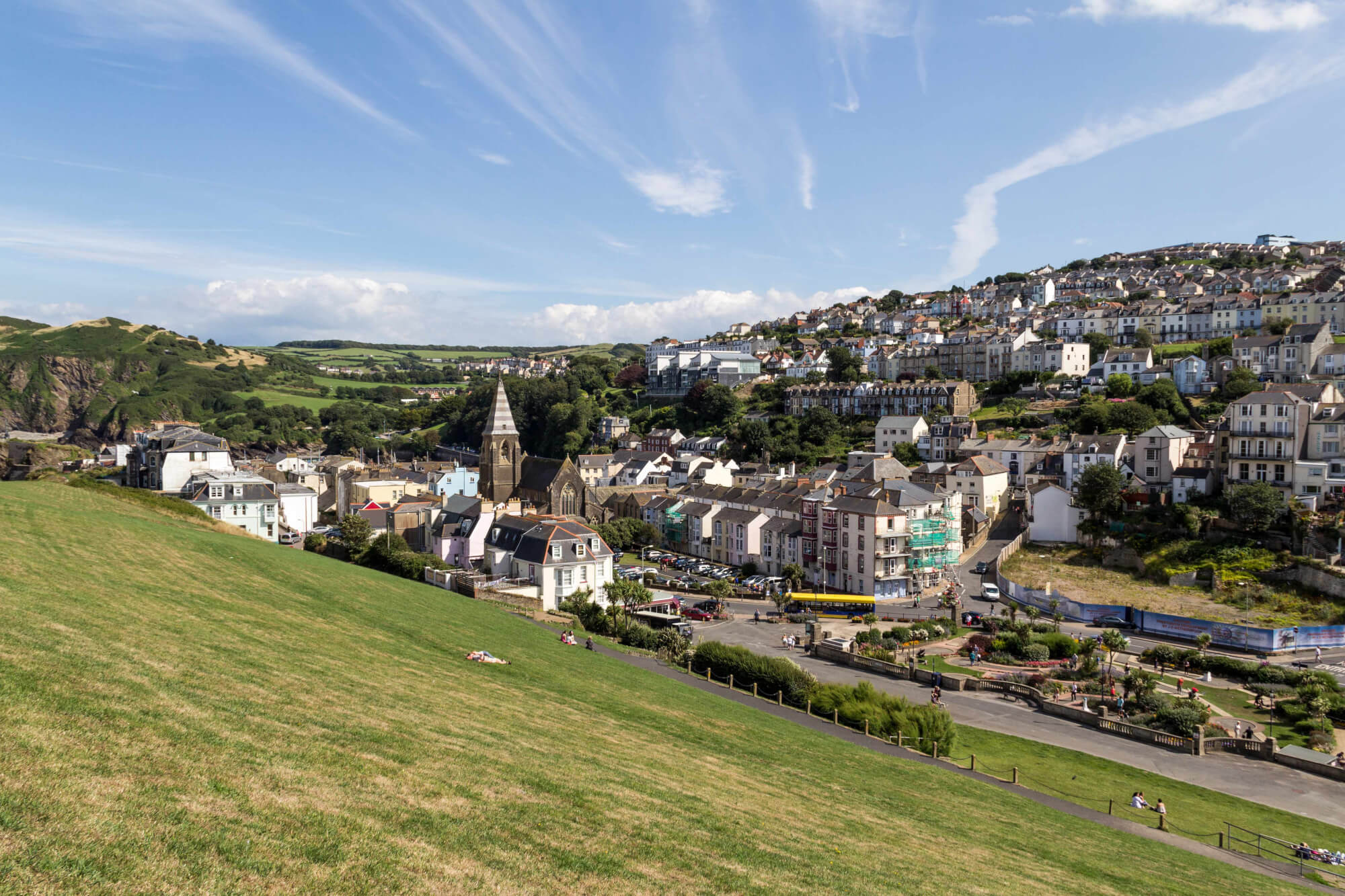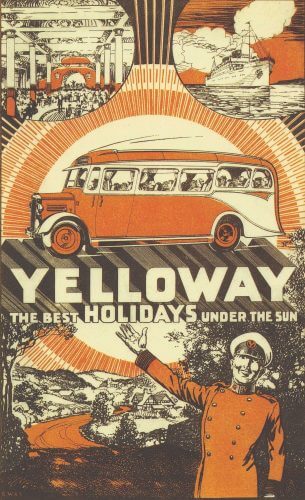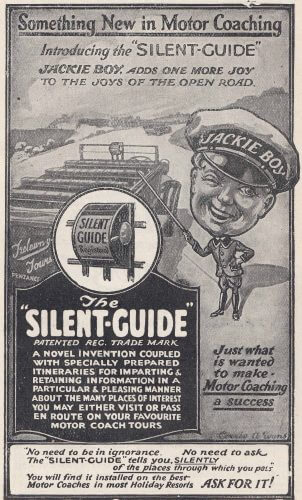
In a two-part article, Alan Payling looks at an old coach tours brochure and considers what a coach holiday would have been like for drivers and passengers back in the good old daysI thought I’d got a real bargain. I was looking through a brochure for coach tours and the prices for the holidays were just unbelievable. On offer was an eight-day tour of the West Country from Weston-super-Mare to Land’s End with hotel accommodation and full board for just £8.75p. That’s right, just under nine quid. So what’s the catch, then? I bet you’re thinking that if there wasn’t a catch then there was a misprint. No. Well, the problem was, when I looked a bit closer, the brochure was out of date. Quite a bit out of date. 82 years out of date to be precise. I was in fact looking at the brochure for coach holidays offered by Yelloway Motor Services of Rochdale in 1936. I did think about phoning the company that now owns the name to see if my cheek would be rewarded with a really cheap coach holiday. However, I sort of imagined the answer I would get, so, having read the brochure and carried out a bit of research, I tried instead to imagine what a coach tour in 1936 would have been like.
A flowery brochure with lots of air
The style of the Yelloway brochure for 1936 is very different to the glossy booklets coach operators produce today. There are no photographs with the only illustrations being line drawings promoting the individual holidays and rough maps showing where the tours would go. Overall, it looks very much like it was put together using an in-house Gestener duplicator which must have been very classy in its day. What it does have to help sell the holidays though are long, flowery descriptions of the itineraries using language that would have gone down well in 1936.
For example, these weren’t just coach tours or holidays. The term holiday was used, but, the prospective passenger could look forward to a ‘Coaching Cruise’ which for the lucky passengers would have been one of ‘The best holidays under the sun!’ Again, when passengers arrived in the West Country for their tour of the English Riviera, south Devon and Cornwall, they would find that they would be ‘Sojourning’ in Torquay. There was also a bit of exaggeration in the brochure. Aberystwyth was described as ‘The Biarritz of Wales,’ Tenby ‘…claims climatic comparison with the South of France’ and Exmoor was ‘…among scenery claimed by many to be equal to the Pyrenees.’ Then there was the air. Air, and clean, bracing air was a big selling point for Yelloway’s cruises. Given that burning coal in 1936 was a major source of power for industry, cooking, heating and washing in places like Manchester where the tours started from, clean air must have been appealing. Yelloway offered plenty of it. Skegness provided ‘…a dry and bracing climate…and the air is filled with ozone, rich in tonic qualities.’ Felixstowe, ‘…enjoys the bracing properties of the North Sea’ and is noted for ‘…its bracing air’ while Eastbourne ‘…has a tonic giving breeze.’ Tenby’s air ‘…enjoys a reputation for dryness and purity’ while Weston-Super-Mare ‘…has a most stimulating air.’ Hastings also ‘…has a tonic laden breeze’ while in Ilfracombe ‘The air is particularly bracing.’ Finally, in Great Yarmouth, ‘…visitors derive great benefit from the remarkably bracing air.’
There was quite a selection of cruises on offer in the brochure; some 30 in total. You could visit nearly all corners of England, Scotland and Wales cruising as far south as Land’s End, as far west as Tenby, as far east as Great Yarmouth and Lowestoft and as far north as Inverness and Elgin. In fact, the destinations and included excursions on offer wouldn’t look out of place in today’s brochures. One thing that was very different from today’s coach holidays for people from the UK is that for the longer cruises, these were touring holidays with overnight stops in two or three different resorts. ‘Coaching Cruise No. 5’, an eight-day jaunt round Somerset, Devon and Cornwall included two nights in Weston-super-Mare, two nights in Ilfracombe, two nights in Newquay and one night in Oxford on the way home.
The 1936 brochure also included a handful of cruises to the continent. The most adventurous on offer was tour number 30, a 10 day holiday to Lucerne in Switzerland priced at £9/9s/0d. This involved travelling on Yelloway’s overnight express coach from Blackpool, Preston, Bolton, Manchester or Stockport to London for 0700hrs. After an included breakfast, the passengers caught a train from Victoria to Dover for ‘a steamer’ bound for Ostend. From there passengers boarded a train for Basel where upon arrival, they could enjoy a breakfast for 2s/6d before making for Lucerne. Other continental holidays included holidays staying in Malo-Les-Bains and Blankenberge. Outward travel followed the same pattern as for the Switzerland tour but with coaches provided at their port of arrival. The itinerary for holidaymakers on the French coast suggests that a bus taken to a place that many had possibly never heard of in 1936 would make for an enjoyable afternoon – Dunkirk. Given that in 1936, the pain and loss of the Great War would still have been very raw, the Belgian and French holidays included excursions to the nearby battlefields. The Malo-Les-Bains itinerary offered an optional whole day tour taking in the Menin Gate Memorial that had been unveiled in 1927 and the ‘Belgian Battlefields’ with a ‘table d’hote lunch’ in Ypres for 13/-. Other Great War sites that could be visited via a ‘motor tour’ were Arras, Vimy Ridge, Shrapnel Corner, Hell Fire Corner and Hill 60.
In an example of how the use of language changes, Yelloway tours were also available to ‘Gay Paris’ and ‘Gay Ostend’. I can imagine that nine days in Paris in 1936 would have been tres jolie and well worth £10/5s/0d: but Gay Ostend? Really? Was it ever that much fun? Mind you, if you lived in Stockport in 1936, Ostend must have been a cracking place. The Paris tour included visits to all the famous places and sights – Notre Dame, Versailles, the Louvre, Fontainebleau and Malmaison – with a ‘Suggested promenade’ via the Champs Elysees, Tuileries Gardens and the Bois de Boulogne. And no doubt, the worthy folk of Lancashire and in particular, Blackpool, would have taken great pride in comparing towers. ‘Eee lad, it’s grand, all reet, but there’s no ballroom, tha’ knows.’ Prices varied and there was a coaching cruise on offer to suit many budgets from an eight day cruise of ‘The Thames Valley, South Coast and Eastern Counties’ for £9/10s/0d to a two day tour of the English Lakes for £1/17s/6d.
Day One – Manchester to Weston-super-Mare
The tour that caught my eye was the one mentioned above, so having paid their £8/15s/0d, my 1930s forebears were looking forward to eight days in the West Country on a tour that would include ‘High Class Hotel Accommodation’ and ‘Excellent cuisine’ with an inclusive breakfast, luncheon and evening meal. The passengers would have left the departure point in Manchester, destination Weston-super-Mare, and this is novel, headed first for Tarporley and Whitchurch before arriving in Shrewsbury where they stopped for lunch.
After lunch, they drove through Church Stretton, Ludlow, Leominster, Hereford, Gloucester and then Bristol. The highlight of Bristol was the ‘drone of airplanes’ of ‘the famous Bristol Aircraft’, no doubt at Pilton, flying machines and aviators still being something of an exciting novelty. After a peek at the Clifton suspension bridge and Bristol’s ‘shipping centre,’ they were off to the first overnight stop at a hotel in Weston-super-Mare. Unfortunately the brochure offers no information about the hotels used which is a shame. However, looking at the mod cons offered in hotels of the day that were listed in the popular Ward Lock guides, Yelloway’s passengers would have enjoyed electric light, the wireless, gas fires in their rooms and certified sanitation.
Day Two – Somerset’s cathedral and caves
Having enjoyed the ‘stimulating air’ in Weston, the group headed off to the cathedral city of Wells. Next up was a visit to Wookey Hole Caves where lunch was to be provided ‘from the home produced viands.’ No, I didn’t know either and despite looking it up – an item of food or a very choice or delicious dish – I’m still none the wiser. Cheddar cheese? The day rounded off with a visit to the caves at Cheddar and then it was back to breathe the stimulating air of Weston.
The coach
It’s not entirely clear what sort of coach would have been used on a tour like this, but two bits of information and an educated guess might provide an answer. The guess is that like operators today, Yelloway would have used their newest and most up to date vehicles on their coaching cruises. Their fleet list tells us Yelloway bought four Bedford WTB Duple’s in 1936, so the assumption based on that fact is that they would have gone straight out cruising on the company’s front line tours. Also, the drawing on the cover of their 1936 brochure looks to me very much like a Bedford WTB. Yelloway had other coaches in the fleet at that time such as Leyland TS1s, TS4s, TS7s, AEC Regals and a Leyland SKP2 amongst others, but the four WTB’s were the most recent acquisitions.
Mechanically, the WTB, made from 1935 to 1939, and eventually replaced by the OB, was a good coach. We’re fortunate in that a 1937 WTB was until recently still being used regularly on tours by John Woodham of Vintage Tours from the Isle of Wight. John still offers the occasional tour in JT8077. He describes the 25-seater, 27hp petrol driven coach as a good coach that was readily available at the right price. It had a boot for cases rather than a luggage rack though storage space was limited. In comparison to the Leylands and AECs of the day, while it had a lightweight chassis, it would go up anything and at a comfortable top speed in the region of 38/40 mph, would return some 9 – 12 miles to the gallon. When John says it would go up anything, he really does mean Telegraph Hill at the end of the M5 and Porlock Hill on the A39 in Somerset. It might have been quicker to walk as it would have crawled up steep hills at 3 – 4 mph, but it was a sturdy, reliable and comfortable vehicle despite the unmade roads of the 1930s.
The coaches of the day were very plush inside. Passengers in 1936 didn’t have ‘seats,’ but were provided with the ‘…luxury chairs of our modern de-luxe coaches.’ Coach design had moved on rapidly from the draughty and bouncy benches of the 1920s charabanc. That experience had probably worn a bit thin – a bit like the solid wheels. Now, the 1930s coach boasted being an all weather vehicle with the option of it being converted to a ‘sun saloon.’ The exterior design of the WTB owed a little bit to the designers’ fad of the age – streamlining – while the interiors were akin to the art deco cinemas of the time. Mirrors and clocks were integrated into the polished wood and chrome fittings of the bulkhead with luggage racks a new feature. Moquette and leather armchair seating came with cloth headrests. Fitted curtains and jelly mould light fittings that would not have looked out of place in the picture palace Odeons of the 1930s all made an appearance. Such elegance made the interiors of coaches places of comfort and style – and you wouldn’t lose your hat. But, for sun worshippers and those who just loved fresh air, as the roof was no longer used for luggage, a retractable canvas roof and windows that opened offered the best of both worlds on a sunny or bracing day.
However, there doesn’t appear to have been any kind of PA system. Where the driver was shut away in a Leyland half cab, Yelloway used a novel system known as a ‘Silent guide’ to let people know where they were. At the start of the day, everyone including the driver would have presumably synchronised their watches. The passengers were provided with a timetable outlining where they were supposed to be at any particular time. So, if a passenger looked out of the window at 1200hrs, they then looked at their watch, looked at the timetable and that would identify where they were. OK if the coach was on time or running early, the driver could slow down a bit. But if he was late, did that mean people looking out of the window at Bristol would think they were in Gloucester? There are apparently other variations on the Silent Guide theme. One type was a driver operated and illuminated board that displayed numbers that corresponded to a detailed schedule issued to the passengers that identified their location for example, but the above method is the one Yelloway describes in their 1936 brochure.
Day Three – To Exmoor and beyond
It was time to say goodbye to Weston as the coach headed west. Today’s jaunt passed through East Brent and Burnham-on-Sea. Then it was a gentle cruise through Highbridge, Bridgewater, Williton and then Minehead for lunch. After their ‘luncheon,’ the group headed into Exmoor, or as it was then known by Yelloway, the English Pyrenees, where they passed through Porlock ‘and its famous hill.’ So my guess is that like a lot of local coaches at the time, up they went – slowly. They then had a chance to see how good the coach’s brakes were as they descended down Countisbury Hill into Lynmouth. Then it was up to Lynton and into Ilfracombe for the night.
To be continued next issue…




